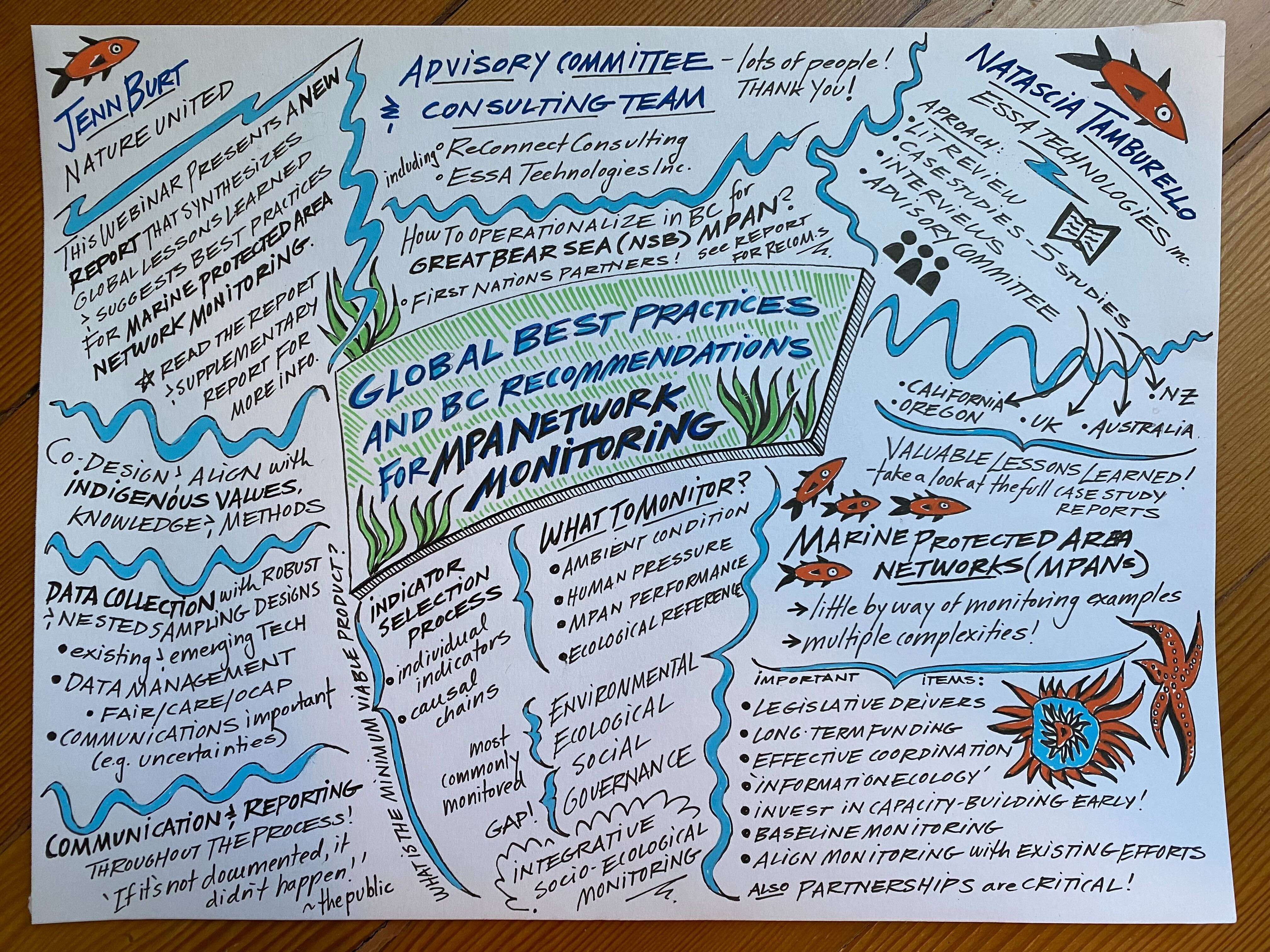October 30th, 2023 | By Rebecca Martone
New Report: Best Practices and Procedures for Operationalizing Marine Protected Area Monitoring
A key goal of the Ocean Decade is to understand the effects of multiple stressors on ocean ecosystems and develop solutions to monitor, protect, manage and restore ecosystems and their biodiversity under changing environmental, social and climate conditions. Marine protected areas (MPAs) are tools that are being implemented around the globe to protect and conserve marine habitats that support biodiversity, community well-being and economic prosperity.
Marine protected area networks (MPANs) - collections of MPAs that operate cooperatively and synergistically within a region - offer opportunities for habitat protection at large spatial scales while still allowing for varying levels of human activities, such as fishing and tourism. Recently, Nature United, with support and input from multiple ocean practitioners across the NE Pacific, released a synthesis report entitled “Best Practices and Procedures for Operationalizing Marine Protected Area Network Monitoring”. Drawing from a set of five global temperate ocean MPAN case studies and reviews of reports and peer-reviewed literature, this Ocean Decade-endorsed report synthesizes global lessons learned, and suggests best practices that are rooted in applied experience from operationalizing MPAN monitoring. These global insights and best practices are placed within the unique context of the Northern Shelf Bioregion (NSB) in British Columbia (B.C.), Canada, to provide recommendations for monitoring the Great Bear Sea MPAN. The NSB MPAN is an unprecedented initiative led by fifteen First Nations and co-developed with the B.C. and federal governments, which recently endorsed and released a Network Action Plan.

The Network Action Plan, led by the tripartite governance partners with input from other Indigenous governments, local governments, stakeholders and the public, provides a blueprint to guide implementation of a network of marine protected areas in the NSB. The proposed Network design presented in the Action Plan was informed by the best available data and information, including traditional, local, and scientific knowledge. The Best Practices for MPAN Monitoring Report applies the insights gained from the global assessment into specific recommendations for the development and implementation of a monitoring program for the MPAN in the Northern Shelf Bioregion.
Synthesis Report:
Supplementary Report and International Case Studies can be found here.
More information on the Great Bear Sea/Northern Shelf Bioregion MPAN and the Network Action Plan can be found here.
Learn more about the February 2023 launch of the Great Bear Sea MPAN in an article by Rochelle Baker at the National Observer.
